Preface
In today's tech world, besides cryptocurrencies, the most imaginative thing is AI. AI and cryptocurrencies are currently the rising stars, and excelling in either industry can lead to the pinnacle of life.
Of course, some people can excel in both industries. For example, as we mentioned before, Sam Altman, through ChatGPT under OpenAI, has made a breakthrough in the AI industry and has also issued a cryptocurrency called WLD, which is now a leading token in the cryptocurrency race. Nowadays, he is also unparalleled after Lafite.
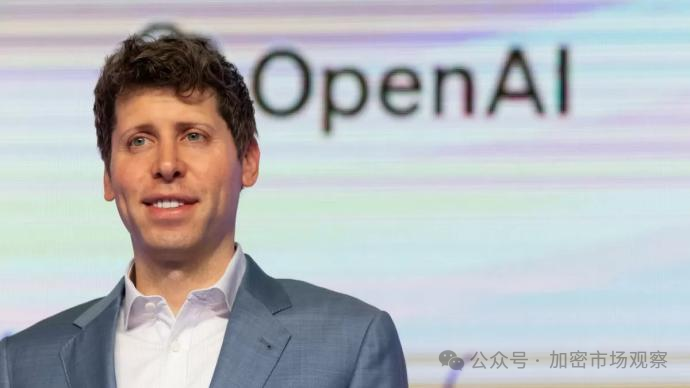
1. What is the AI+Depin Track
Are there any good projects that straddle two major tracks like Sam Altman? In fact, there are, and it seems to make more sense than Sam Altman's logic. That is to build AI infrastructure using web3 methods. Since the popularity of large models, the demand for AI infrastructure has been very strong. AI infrastructure requires powerful computing power. According to a calculation by McKinsey in January 2023, OpenAI alone consumed the equivalent of the annual electricity consumption of about 175,000 Danish households in just one month. Compared to Bitcoin mining, the electricity consumption of AI infrastructure is huge. In addition to electricity consumption, the GPU chips for computing power are also extremely expensive, with H100 and A100 costing tens of thousands to millions of RMB. These are toys for enterprise-level players, and various centralized computing power data centers have been established. With such high barriers, when we encounter web3, retail investors must also be able to participate! Lower the threshold for AI technology infrastructure! AI computing power must be decentralized, and AI data storage must be decentralized! The bandwidth used by AI must be distributed bandwidth.
So, many AI+Depin track projects have emerged this year.
We are very familiar with AI, which stands for Artificial Intelligence in English.
As for Depin, the English translation is Decentralized Physical Infrastructure Networks, which means that if this narrative is realized, the devices around you, such as computers and mobile phones, can all become part of the decentralized physical infrastructure and help you make money.
Due to the strong demand for AI, many Depin projects this year are serving AI.
The core elements of DePIN include three points:
- Decentralized: First of all, it is decentralized, which is the biggest difference from traditional cloud providers. In the past, many AI computing and storage resources were provided by big companies such as Amazon and Microsoft. Our cryptocurrency revolution is mainly aimed at overthrowing these big companies. The most ideal result, of course, is to unite the devices of ordinary people to achieve a chain reaction. But the final situation may be like Bitcoin mining, where the demand for AI computing power and storage is released through a publicly unified method, and anyone with computing power and storage resources can access it.
- Physical Infrastructure: These services cannot be provided by manpower or air, but require different types and sizes of hardware, including various IoT devices, 5G information towers, various servers, or even mobile phones.
- Token Economy: The network is built and contributed to by the community through economic incentives.
If the above three points are achieved, then it is a Depin project. In fact, the most successful Depin project we are familiar with is Bitcoin mining.
Look at it: decentralized computing power, physical infrastructure like mining machines, and Bitcoin as a token economy incentive.
2. Is this concept reliable?
Some viewers may ask, is the demand for computing power for AI calculations now also requiring specialized equipment, and can ordinary civilian devices such as mobile phones and computers be used?
The demand for AI computing power can generally be divided into three types:
One is for training large models, which has the highest requirements and is currently only provided by Nvidia.
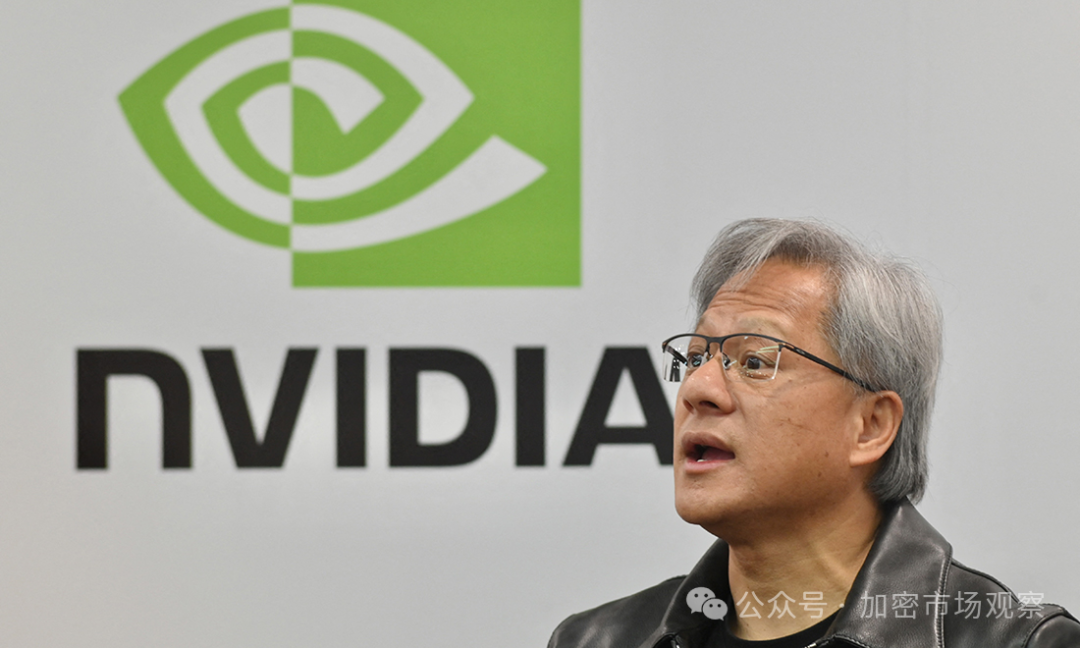
The second type is for deploying and interacting with users' questions after training large models, commonly known as inference, which requires a lower level of computing power than training. Currently, Nvidia, Huawei, and 2-3 domestic startups can provide this.
The third type is for deploying small models on the edge side to run results, which requires even lower computing power, typically tens of teraflops.
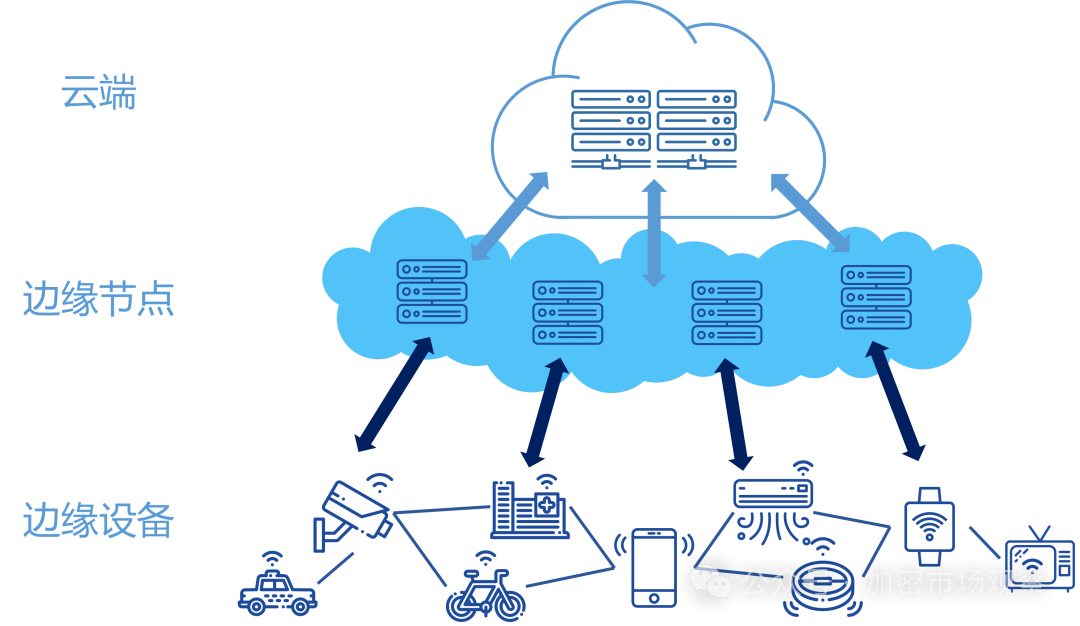
The first type requires specialized equipment, and even if the Depin project is successful, it is likely to be high-cost and not relevant to ordinary people.
However, the second and third types of demand can still be met by ordinary civilian devices.
3. Overview of Top AI+Depin Projects
After discussing so much, I believe everyone has a certain understanding of the demand for AI and Depin. So let's take a look at the popular AI+Depin projects in the industry this year.
IO.NET
First, let's introduce io.net.

io.net is a decentralized AI computing platform based on Solana developed by IO Research. In March of this year, it announced the completion of a $30 million Series A financing led by Hack VC, with a valuation of $1 billion!
In terms of valuation, it is currently the highest among the projects we are introducing today.
So, what exactly does Io.Net do?
According to io.net's documentation, io.net can aggregate unused GPUs from independent data centers, cryptocurrency miners, and other hardware networks such as Filecoin and Render.
Who will use this computing power?
The current target users of io.net are AI startups and developers, because these users are relatively poor and cannot afford the high cost of renting GPU/CPU computing power. Moreover, these companies generally do not engage in large model training, and their equipment requirements are not so high. Most of them only need to perform inference or edge-class model calculations.
So, who will provide this computing power? Gamers and cryptocurrency GPU miners.
Gamers have high-end hardware and fast internet connections, but usually only have one GPU card; while cryptocurrency GPU miners have a large amount of GPU resources, but may face limitations in internet connection speed and storage space.
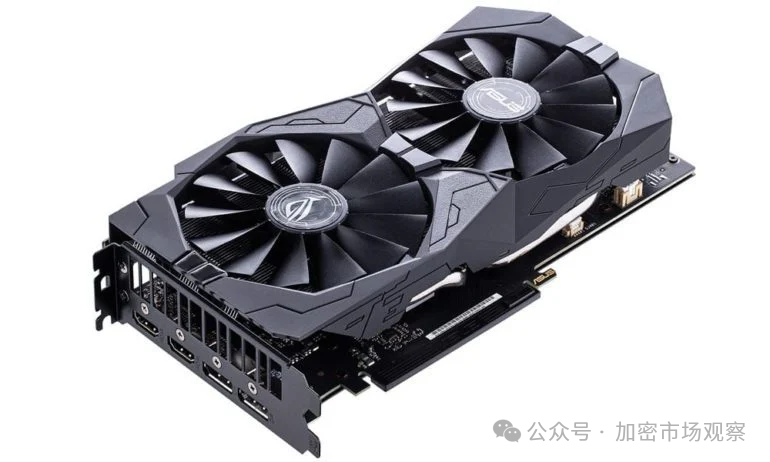
Therefore, if you want to provide computing power for io.net, you should consider the performance of your devices. If they are not up to par, it's better not to participate.
Doesn't io.net seem to make a lot of sense? It must have some reason to be valued so high, right? (There have been quite a few scandals recently)
Aethir

Another heavyweight player is Aethir, which completed a pre-Series A financing in mid-2023, raising over $9 million in total funding and reaching a valuation of $150 million. The round was led by well-known investors Sanctor Capital and Hashkey.
This project is a cloud computing platform that promises to completely change the current technological landscape by implementing scalable and inclusive changes in GPU sharing, ownership, and usage. Aethir allows enterprises and individuals to contribute idle GPUs to a shared network, optimizing resource utilization and providing convenient access to top-tier computing power for a wide user base in fields such as artificial intelligence, cloud gaming, and machine learning. In essence, Aethir purchases GPU resources from users and then sells the integrated computing power to major gaming companies. This is because the core of CPU is the graphics processing capability, and high-end games now require real-time rendering, which still demands significant GPU computing power. It has been reported that Aethir has signed contracts with the world's largest game studios, with a player base of 150 million. Although the studio's identity has not been disclosed, it is likely to be Riot, which has released "League of Legends" and has reached such a scale.
In addition, Aethir has an official partnership with WellLink, the largest cloud gaming company with over 64 million monthly active users.
The upstream procurement side seems to be doing well, but how about the downstream suppliers?
According to official information, as of March this year, over 40,000 devices have already joined the network, indicating that the project is making progress.
It is also worth mentioning that on March 20th of this year, Aethir launched the "Check Node" public sale, which raised $100 million in just one day. It is said that there will soon be sales of small-scale GPU mining machines, making the operation more and more like the rhythm of Bitcoin mining.
However, whether Aethir can attract so many users to participate in network construction is still unknown, but it is certainly gaining momentum. Feel free to guess in the comments section, who will be listed on Binance first, Aethir or io.net?

As we mentioned before, whether it's io.net or Aethir, the main demand on the supply side is computing power.
If some viewers ask, "I don't have computing power, but my internet connection is good. Can I mine by providing only network resources?"
Yes, there is a project called Grass that allows users to profit from selling unused network resources through internet connections.
According to the official description, Grass currently allows users to provide unused internet bandwidth through a web browser extension to earn points, which will be retrospectively converted into network ownership at the end of the product's beta phase.
In simple terms, you can mine by simply being online, even with a mobile phone.
This project completed a $3.5 million seed round of financing at the end of 2023, with the well-known Polychain as the lead investor. It is worth noting that the majority of infrastructure projects listed on Binance are backed by Polychain.
In July of last year, Grass also completed a pre-seed round, with No Limit Holdings as the lead investor. This organization can be considered a hidden giant in the cryptocurrency industry, with its founder being Gin Chao, the former third-in-command at Binance, and the founder of Binance Labs. It has a very high probability of listing on Binance, and the previously mentioned Stroom is also a company backed by this organization. Just a few days ago, Jeremy Huff, the COO of Morgan, joined the cryptocurrency industry and this No Limit Holdings.
So, Grass can be considered as being born with a golden spoon.
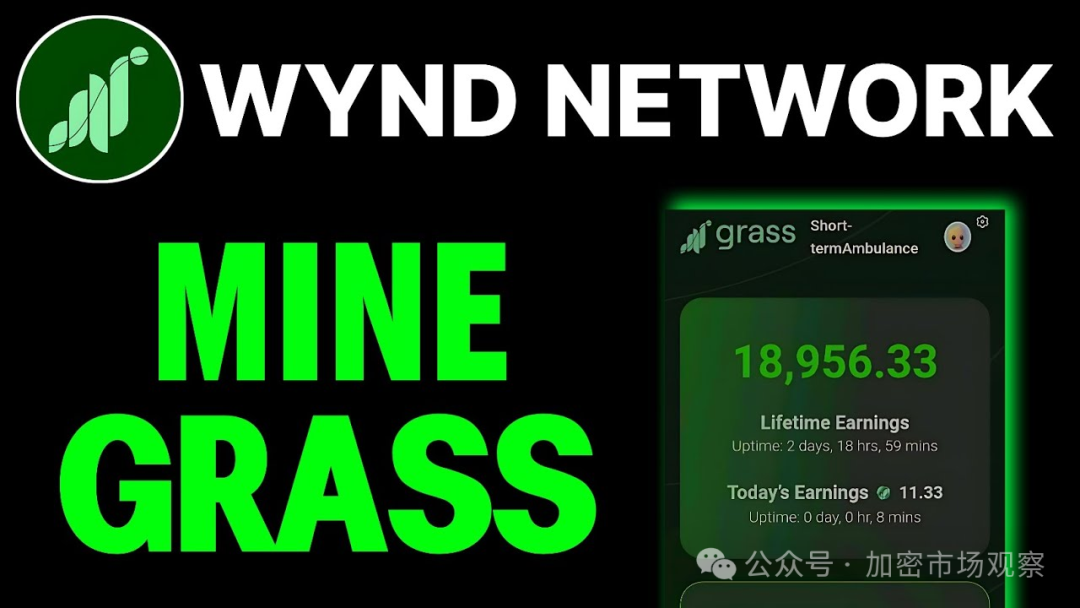
We previously mentioned that whether it's io.net or Aethir, the main demand on the supply side is computing power.
If some viewers ask, "I don't have computing power, but my internet connection is good. Can I mine by providing only network resources?"
Yes, there is a project called Grass that allows users to profit from selling unused network resources through internet connections.
According to the official description, Grass currently allows users to provide unused internet bandwidth through a web browser extension to earn points, which will be retrospectively converted into network ownership at the end of the product's beta phase.
In simple terms, you can mine by simply being online, even with a mobile phone.
This project completed a $3.5 million seed round of financing at the end of 2023, with the well-known Polychain as the lead investor. It is worth noting that the majority of infrastructure projects listed on Binance are backed by Polychain.
In July of last year, Grass also completed a pre-seed round, with No Limit Holdings as the lead investor. This organization can be considered a hidden giant in the cryptocurrency industry, with its founder being Gin Chao, the former third-in-command at Binance, and the founder of Binance Labs. It has a very high probability of listing on Binance, and the previously mentioned Stroom is also a company backed by this organization. Just a few days ago, Jeremy Huff, the COO of Morgan, joined the cryptocurrency industry and this No Limit Holdings.
So, Grass can be considered as being born with a golden spoon.
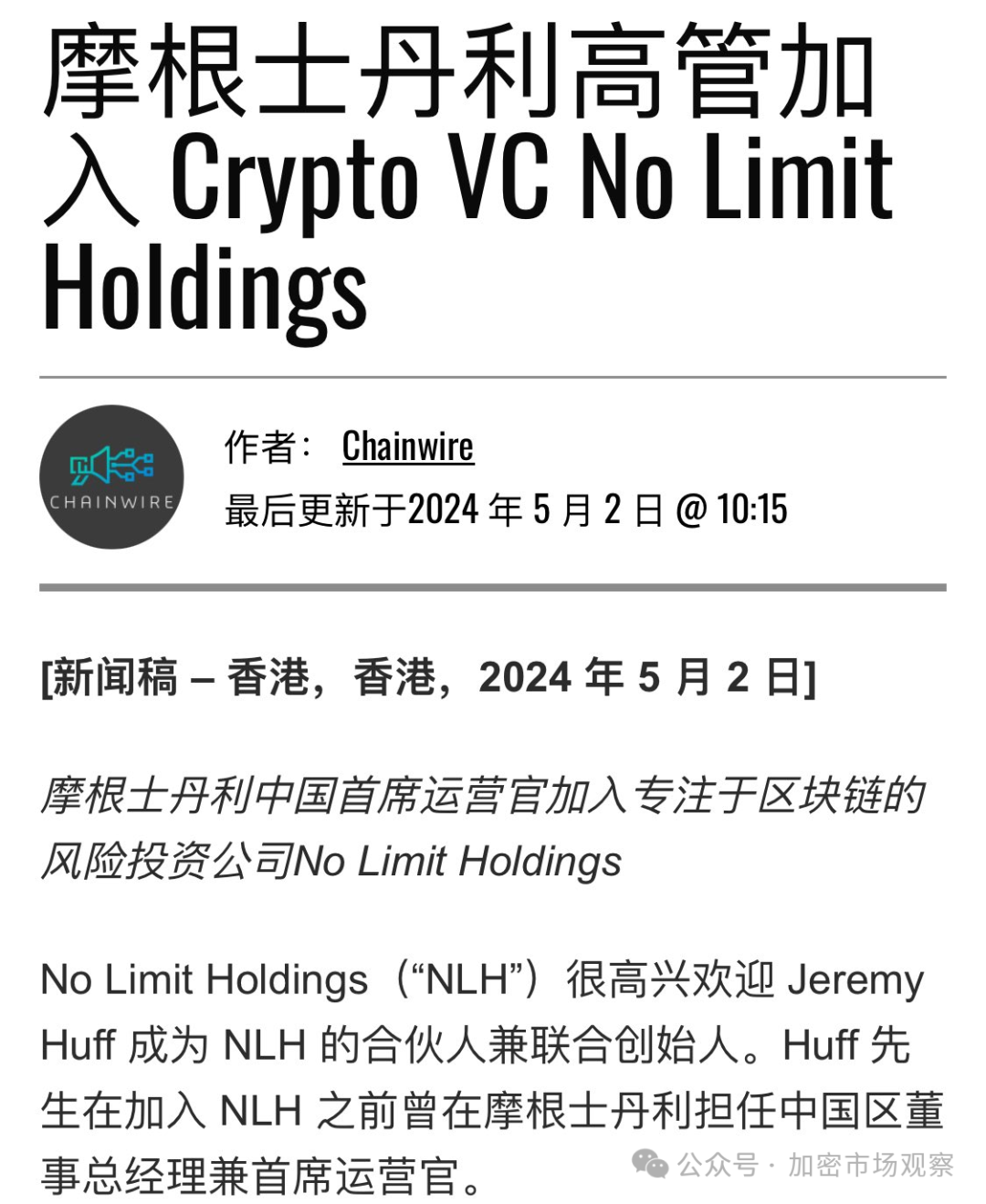
If some viewers ask, "I don't have computing power, but my internet connection is good. Can I mine by providing only network resources?"
Yes, there is a project called Grass that allows users to profit from selling unused network resources through internet connections.
According to the official description, Grass currently allows users to provide unused internet bandwidth through a web browser extension to earn points, which will be retrospectively converted into network ownership at the end of the product's beta phase.
In simple terms, you can mine by simply being online, even with a mobile phone.
This project completed a $3.5 million seed round of financing at the end of 2023, with the well-known Polychain as the lead investor. It is worth noting that the majority of infrastructure projects listed on Binance are backed by Polychain.
In July of last year, Grass also completed a pre-seed round, with No Limit Holdings as the lead investor. This organization can be considered a hidden giant in the cryptocurrency industry, with its founder being Gin Chao, the former third-in-command at Binance, and the founder of Binance Labs. It has a very high probability of listing on Binance, and the previously mentioned Stroom is also a company backed by this organization. Just a few days ago, Jeremy Huff, the COO of Morgan, joined the cryptocurrency industry and this No Limit Holdings.
So, Grass can be considered as being born with a golden spoon.
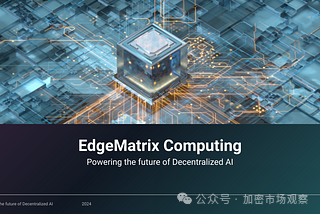
If some viewers ask, "I don't have computing power, but my internet connection is good. Can I mine by providing only network resources?"
Yes, there is a project called Grass that allows users to profit from selling unused network resources through internet connections.
According to the official description, Grass currently allows users to provide unused internet bandwidth through a web browser extension to earn points, which will be retrospectively converted into network ownership at the end of the product's beta phase.
In simple terms, you can mine by simply being online, even with a mobile phone.
This project completed a $3.5 million seed round of financing at the end of 2023, with the well-known Polychain as the lead investor. It is worth noting that the majority of infrastructure projects listed on Binance are backed by Polychain.
In July of last year, Grass also completed a pre-seed round, with No Limit Holdings as the lead investor. This organization can be considered a hidden giant in the cryptocurrency industry, with its founder being Gin Chao, the former third-in-command at Binance, and the founder of Binance Labs. It has a very high probability of listing on Binance, and the previously mentioned Stroom is also a company backed by this organization. Just a few days ago, Jeremy Huff, the COO of Morgan, joined the cryptocurrency industry and this No Limit Holdings.
So, Grass can be considered as being born with a golden spoon.

AI and the cryptocurrency industry are still in the investment phase, which means they are long-term prospects, but short-term implementation and monetization are still uncertain.
However, AI and the cryptocurrency industry might just be able to combine through the Depin method.
I hope that one day, everyone's mobile phones and computers can support themselves and the audience, making good use of the time spent on them, even more than the time spent with loved ones.
Goodbye!
免责声明:本文章仅代表作者个人观点,不代表本平台的立场和观点。本文章仅供信息分享,不构成对任何人的任何投资建议。用户与作者之间的任何争议,与本平台无关。如网页中刊载的文章或图片涉及侵权,请提供相关的权利证明和身份证明发送邮件到support@aicoin.com,本平台相关工作人员将会进行核查。




